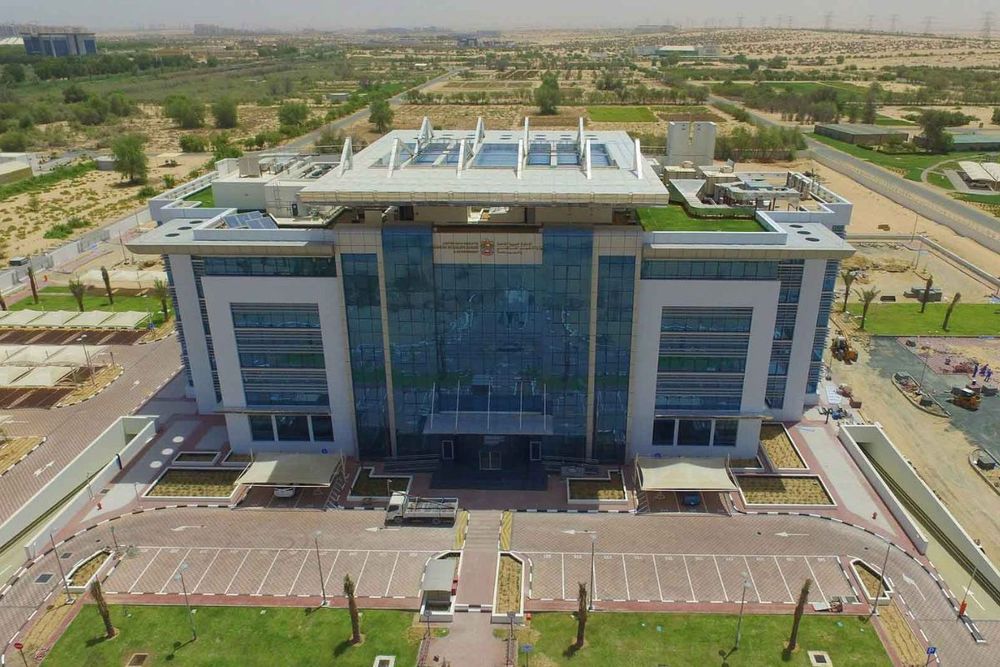The Ministry of Climate Change and Environment today unveiled the results of the second edition of the National Air Pollutant Inventory Study.
The aim was to conduct an all-inclusive investigation on the amount of air pollutant emissions originating from various sectors in the country. The data used to prepare this edition consisted of emissions recorded until 2019.
The study comes as part of the Ministry of Climate Change and Environment's efforts to improve air quality through several projects that will be launched as part of the UAE Environment Policy. Among its most important goals is to elevate air quality levels to protect society from the health effects resulting from their decline, thereby enhancing the well-being and prosperity of society and ensuring a better environment.
While preparing for the study, the Ministry of Climate Change and Environment held a series of bilateral and consultative meetings and workshops in cooperation with 128 strategic partners and concerned specialized entities from the federal government, local authorities, the semi-governmental sector, and the private sector.
The National Air Pollutant Inventory Study aims to update the inventory lists of air pollutant emissions and quantify the emissions from influential sectors including energy, transportation, construction, industrial processes and product use (IPPU), agriculture, waste, and livestock sectors. Additionally, it aims to understand and analyze the nature of pollutants, emissions, sources, and rates in order to develop plans that improve air quality.
Essa Al Hashmi, Assistant Undersecretary for the Sustainable Communities Sector and Acting Assistant Undersecretary for the Green Development and Climate Change Sector at the Ministry of Climate Change and Environment, said:
“The Ministry is collaborating with various partners to find practical solutions for different environmental and climate challenges in the country. Air quality represents one of the most important issues through which we seek to improve the quality of life and create a healthy environment for society.”
He added:
“The National Air Pollutant Inventory Study identifies the real causes of air pollution emissions in the country across different sectors, it evaluates environmental policies and their achievement of their targets. The study provides accurate results by following the latest global systems for monitoring air pollutants. This will provide updated data and figures that summarise the current situation to draw policies and plans aimed at improving air quality based on sound and realistic foundations, ensuring the efficiency of future policies and projects and their compatibility with the current situation.”
Results
The key results of the National Air Pollutant Inventory Study revealed variations in the estimated emissions for most pollutants between 2015 and 2019, mainly due to a rise in overall activity levels. However, it should be noted that estimated emissions of sulfur dioxide decreased significantly as a result of improvements in activities related to the oil and gas sector, levels of natural gas use, and an increase in sulfur extraction units.
The study results also highlighted a decrease in nitrogen oxide emissions from the transportation sector as a result of the application of the Euro 4 standard on new vehicles in 2018. The results also revealed stable nitrogen oxide emissions between 2015-2019 due to stable emissions in the energy generation sector, and it is expected that these pollutants will significantly decrease as a result of operating the Barakah nuclear power plant for peaceful and clean energy production.
Furthermore, the study also revealed that the majority of carbon monoxide emissions were from the industrial and material use sector, followed by the transportation sector, specifically light vehicles. Most of the particulate matter emissions with diameters less than 10 microns and 2.5 microns (PM10, PM2.5) resulted from construction and demolition activities. The results also highlighted that fertilizers, followed by light vehicles, were the main sources of ammonia emissions in the country.
Study implementation mechanism
The National Air Pollutant Inventory Study focused on inventorying the emissions rates of carbon monoxide, nitrogen oxides, sulfur dioxide, particulate matter with a diameter less than 10 microns, particulate matter with a diameter less than 2.5 microns, and non-methane volatile organic compounds, and determining their quantities in a number of main sectors including energy, transport, industrial processes and product use (IPPU), as well as those resulting from the waste and animal husbandry sectors.
In this version of the study, the activity of construction and demolition was added within the industrial processes and product use sector, as well as the railways within the energy sector, in addition to adding ammonia as a pollutant.
The Ministry of Climate Change and Environment relied on the methodologies and emission factors specified in the EMEP/EEA Air Pollutant Emission Inventory Guidebook 2019 to calculate emissions rates from various sectors, as it is an internationally recognized reference guidebook for such studies, used by European, North American, Asian, and other countries. The guidebook provides transparent methodologies that allow for comparison of results with those of other countries.
News Source: Emirates News Agency









